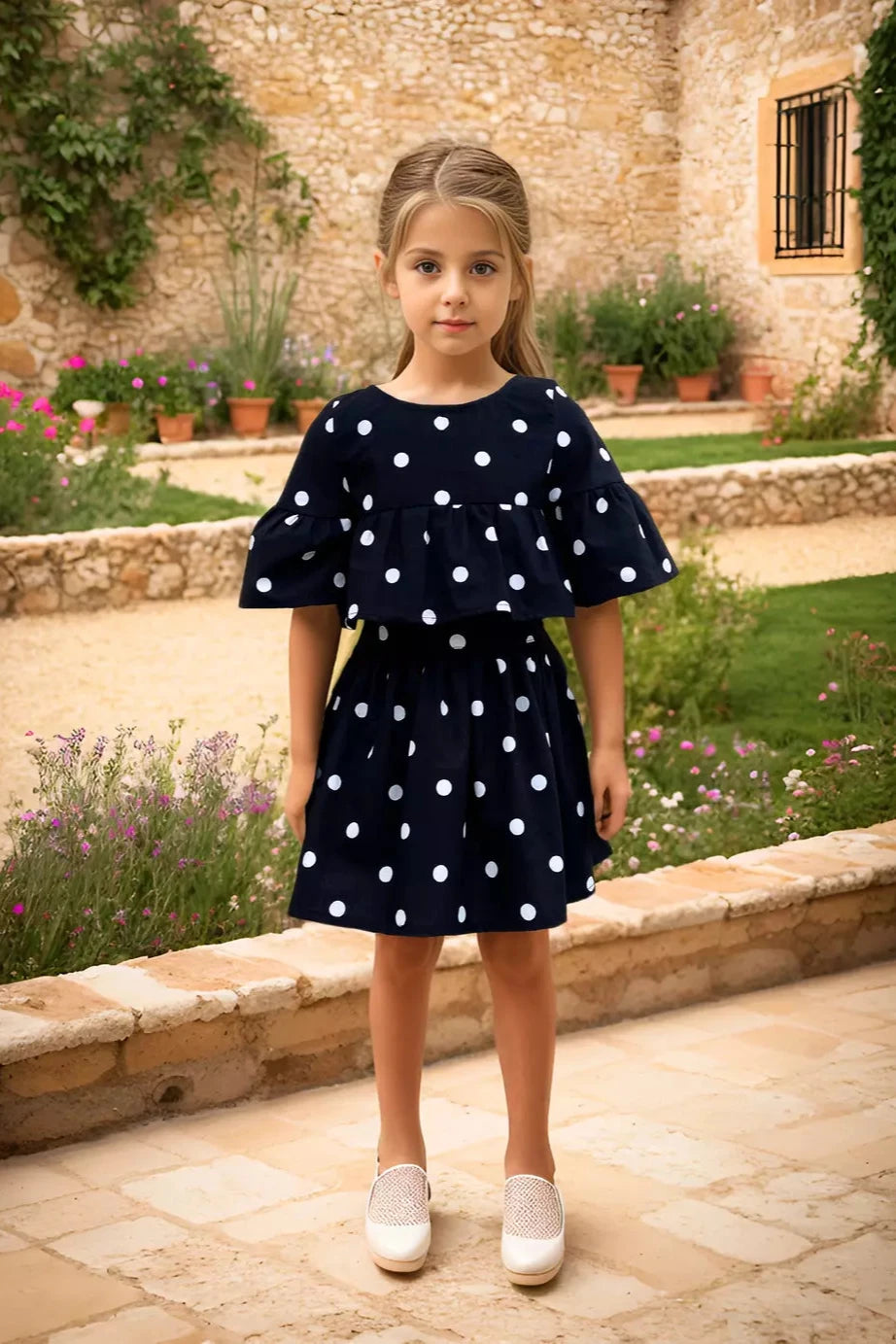15 Children Stories (With Moral Lessons)
Short stories have always played an important role in imparting moral lessons amongst young children. It not only helps in developing imagination, but the lessons learnt from these stories also helps them become aware of their actions and consequences. They play an important part in shaping their character and also acts as a moral compass for life. Here are a few stories with morals that can help them learn different values of life.
THE BOY AND THE APPLE TREE

Once upon a time, there was a big apple tree and a little boy who loved to play with it every day. The boy climbed the tree, ate apples, and napped in its shade. As the boy grew up, he visited the tree less and less.
One day, the boy came back, looking sad. The tree asked him to play, but the boy wanted toys and money. The tree suggested selling its apples, and the boy happily took them, but he never returned.
Years later, the boy, now a man, returned needing a house. The tree offered its branches for the man's house, and the man left happily but never came back. The lonely tree waited.
On a hot day, the man returned, wanting a boat. The tree offered its trunk, and the man sailed away, not returning for a long time. When he finally came back, the tree had nothing left to give.
The man apologized, and the tree, with its dying roots, offered a place to rest. The man realized the importance of the tree's love and sacrifices.
This story is like our parents who give us everything when we are young. Sometimes, we forget their love and only come to them when we need something. The story teaches us to appreciate and love our parents.
MORAL OF THE STORY: The best gift you can offer your loved ones is the gift of time.

Once upon a time, a fisherman cast his net into a river, hoping to catch lots of fish to sell. To his surprise, he only caught a tiny fish. The little fish pleaded with the fisherman, asking to be set free. The clever fish promised to help the fisherman by bringing its friends to the riverbank the next day.
Excited at the thought of catching more fish, the fisherman released the tiny fish back into the water. The next day, however, no other fish appeared. The fisherman realized he had been tricked by the clever little fish.
The moral of the story is that sometimes being clever can help you in tricky situations. It's important to think smart and not always believe things that seem too good to be true.
MORAL OF THE STORY: You should never lose hope even in difficult situations.
THE ELEPHANT AND THE ANTS

Once in a forest, there was a powerful elephant who walked with giant steps, unknowingly crushing ant hills every day. The ants, tired of this, decided to teach the elephant a lesson. While the elephant was peacefully munching on banana leaves, the ants gathered and started biting him. The elephant, in pain, trumpeted loudly.
Feeling sorry for the suffering they caused, the ants apologized, revealing their intention to teach a lesson. Realizing his mistake, the elephant understood that all living beings experience pain. From that day forward, the elephant chose not to trouble others.
MORAL OF THE STORY: Being bigger doesn't always make someone great. Never underestimate anyone, including yourself.
THE CAP SELLER AND THE MONKEYS

Once upon a time, in a town, there was a cap seller who sold caps by calling out, "Caps, caps, five rupees, caps, caps, ten rupees." After selling some caps, he got tired and decided to rest under a big tree, eventually falling asleep. Unbeknownst to him, mischievous monkeys from the tree took the caps from his bag and started wearing them.
When the cap seller woke up, he saw that all of his caps were missing. He looked up and saw the monkeys wearing them. Desperate to get back his caps, he threw stones at the monkeys, and in return, they threw mangoes to protect themselves. The cap seller realized the monkeys were imitating him.
Using his wisdom, the cap seller had an idea. He took off his own cap and threw it on the ground. The monkeys, imitating him again, threw all the caps on the grass. Seizing the opportunity, the cap seller collected his caps, put them back in his basket, and happily went on his way.
MORAL OF THE STORY: Wisdom and clever thinking are more powerful than force or weapons. It helps in difficult situations.

Once upon a time, there were two trees near a river, and a small sparrow was passing by. The sparrow asked the first tree if she could make a nest on its branches for herself and her babies because heavy rain was expected. The first tree refused, and the sparrow flew away. The sparrow asked the same question to the second tree, and it kindly allowed her to build a nest on its branches.
When the heavy rain arrived, the first tree, with weak roots, broke and fell into the river. The sparrow, seeing this, went back to the first tree and told it that it got punished for rejecting her. Surprisingly, the first tree smiled and explained that it already knew its roots were weak and wouldn't withstand heavy rains. It didn't want to risk harming the sparrow and her babies, apologizing for not allowing her to build a nest.
Realizing her misjudgment, the sparrow felt sorry for the first tree. The moral of the story is not to judge someone or something based on appearances alone. It teaches us to understand the truth before making judgments, reminding us not to judge a book by its cover.
MORAL OF THE STORY: Don't judge a book by its cover.

Once, a crow admired the beauty of a swan, with its all-white feathers, while the crow himself had black feathers. The crow expressed his admiration to the swan, who, in turn, mentioned that the parrot was the most beautiful bird to her because it had two colors, unlike her single color. The crow then approached the parrot, stating that the peacock was more beautiful due to its multiple colors.
When the crow shared his thoughts with the peacock, the peacock replied, saying that the crow was the luckiest bird because he was never captured due to his simple beauty. The peacock, on the other hand, was often trapped because of its dazzling appearance. Realizing the wisdom in the peacock's words, the crow thanked God for making him the way he was.
The moral of the story is not to compare oneself to others and to find happiness in what one is and what one has. It teaches kids the importance of appreciating their unique qualities and being content with themselves rather than wishing to be someone else.
MORAL OF THE STORY: Always appreciate what you have.

In the beautiful and rich town of Hamelin, an overrun rat problem troubled the townspeople. Despite various attempts using cats and traps, they failed to get rid of the rats. A wandering man arrived, claiming he could solve the issue, demanding 1,000 gold coins. The mayor agreed to pay only 100 gold coins.
The piper began playing his pipe, and miraculously, all the rats followed him. He led them to the sea, drowning the rats. When he sought his promised reward, the mayor refused to pay more than 100 gold coins. In response, the piper played another tune, captivating the children this time. They joyfully followed him, alarming their parents as he led them far from Hamelin.
Realizing their mistake, the desperate parents promised the piper 1,000 gold coins if he returned their children. The piper relented, releasing the children and receiving his payment. He disappeared, never to be seen again.
The moral of the story emphasizes the importance of keeping promises and the consequences of not honoring agreements. It teaches children about the value of fulfilling commitments and the potential repercussions when promises are broken.
MORAL OF THE STORY: Always keep your promises and never be ungrateful.

On a hot day, an ant near a riverbank accidentally fell into the water, desperately calling for help. A compassionate dove perched on a nearby tree saw the ant's struggle and decided to lend a hand. The dove plucked off a leaf, dropped it into the water, and invited the ant to climb onto it. With the leaf as a raft, the ant reached the shore safely, expressing gratitude.
Several weeks later, the ant noticed a hunter with a gun targeting the dove. Understanding the danger, the ant bit the hunter, diverting his attention and saving the dove. The thankful dove realised the ant's help and walked away happily.
MORAL OF THE STORY: Kindness and helpfulness bring positive outcomes.

Once upon a time, in a garden, there were three beautiful butterflies – one pink, one blue, and the third orange. Every day, these three butterflies danced and played together, forming a strong friendship. One day, as they were playing, a heavy rain suddenly started. Seeking shelter, they approached the pink, blue, and orange flowers, respectively.
The pink butterfly asked the pink flowers for refuge, the blue butterfly sought shelter under the blue flowers, and the orange butterfly requested the same from the orange flowers. Each time, the flowers welcomed the butterfly that matched their colour, but the butterflies insisted they were good friends and wouldn't leave each other. Unable to find individual shelters, they faced the rain together.
Witnessing their loyalty, the sun decided to intervene. It dispersed the clouds, stopped the rain, and brought out the sunshine. The three butterflies, with their wings dried by the sun, resumed playing happily.
MORAL OF THE STORY: Unity is the most powerful force, always remember the importance of true friendship, where friends stand together through challenges, sharing and caring for each other.

Once upon a time, a poor farmer discovered a magical pot while ploughing his field. When he put a mango into the pot, it magically multiplied into hundreds. Realizing its power, the farmer strategically used the pot to create abundance, bringing prosperity to his family.
To keep their newfound wealth a secret, the farmer and his wife were cautious. However, their riches caught the king's attention. Believing the powerful pot belonged in his treasury, the king ordered its confiscation. Curiosity got the better of him as he peered into the pot, causing him to fall in and lose consciousness.
Upon waking, the king found himself surrounded by countless versions of himself, leading to chaos and demise. Learning of the king's fate, the farmer and his wife decided not to reclaim the pot, recognizing its dangers. Content with their wealth, they left the pot within the king's treasury.
MORAL OF THE STORY: Greed always leads to trouble. Therefore, you should be content with what you have.

Once upon a time, in a small town, there was a young, poor boy who struggled to make ends meet. One day, after school, he found himself hungry and without any money or work. Desperate, he decided to ask for a glass of water from a nearby house. A kind young girl opened the door, and instead of just water, she generously offered him a glass of milk, understanding his hunger.
Years passed, and the girl grew into a woman. Unfortunately, she fell seriously ill and needed prolonged medical care. Dr. Philip, assigned to her case, fulfilled his promise to take care of her. After six months of treatment, she was healthy again but worried about paying the hefty hospital bill. To her surprise, the bill was marked "Paid in full years ago with a glass of milk," signed by Dr. Philip.
The woman was astonished to realize that Dr. Philip was the same boy she had helped years ago. His act of kindness had come full circle, turning into a powerful reminder that one good deed can lead to another. The story teaches us the profound impact of kindness and generosity, highlighting the ripple effect of goodness in unexpected ways.
MORAL OF THE STORY: NEVER hesitate from helping others.

Once upon a time, in a faraway kingdom, King and Queen had a heartfelt wish for a child. After a long wait, their dream came true, and they welcomed a beautiful baby girl named Sunshine. The kingdom rejoiced, organising grand celebrations for her first birthday, attended by all fairies except the wicked Black Fairy, who cursed the princess on her 16th birthday.
The curse foretold that the princess would prick her finger on a spindle and fall into a deep sleep, only to awaken with true love's kiss. To protect Sunshine, the king ordered the removal of all spindles except one hidden in a tower.
As the years passed, Sunshine grew under the watchful eyes of the fairies. On her 16th birthday, she discovered the hidden spindle and succumbed to the curse. The entire kingdom fell into a deep slumber. A brave prince, hearing tales of the Sleeping Beauty, ventured into the enchanted forest, awakening everyone with a true love's kiss, breaking the curse.
The prince and the princess, deeply in love, got married, bringing joy and happiness to the entire kingdom. The story teaches that even in the face of adversity, there are always well-wishers and true love to overcome challenges and lead to a happily ever after.
MORAL OF THE STORY: No matter if bad people think bad for you there are always some well-wishers to help you out.

Once upon a time, there was a kind and gentle girl named Cinderella. Her mother had passed away, and her father remarried a woman with two daughters who treated Cinderella as their servant. Despite the mistreatment, Cinderella remained loving and never complained.
One day, an announcement of a royal ball reached the village, and everyone was invited, including Cinderella's stepmother and stepsisters. However, they forbade her from attending, leaving Cinderella heartbroken. In her sorrow, a magical fairy godmother appeared, transforming her rags into a beautiful gown and a pumpkin into a carriage.
Cinderella arrived at the royal ball, where she captivated everyone, including Prince Charming. They danced the night away, but she had to leave before midnight as her fairy godmother warned. In her haste, she left behind a glass slipper.
The next day, the prince sought the owner of the glass slipper. Despite the stepsisters' attempts, the slippers only fit Cinderella. Prince Charming recognized her as the beautiful maiden from the ball, and they were happily reunited.
Cinderella's kindness prevailed as she forgave her stepfamily. She and Prince Charming lived happily ever after, teaching us the power of kindness and the belief that true love triumphs over hardships.
MORAL OF THE STORY: Kindness is a form of beauty. Always be kind to people even if they are not kind towards you.

Once upon a time, a young prince was on a quest to find the perfect princess to marry. After searching far and wide, he couldn't find one who met all the criteria. One stormy night, a drenched and mud-covered girl arrived at the castle claiming to be a princess. The queen, intrigued, invited her in, despite her disheveled appearance.
To test if she was a true princess, the queen devised a clever plan. She ordered a special bed with a pea hidden beneath 20 soft mattresses. The next morning, the girl revealed that she had a sleepless night, feeling discomfort from something poking her back. The queen smiled, realizing that only a true princess would be sensitive enough to feel a small pea beneath so many mattresses.
Convinced of her authenticity, the prince married the humble and kind princess. They ruled the kingdom together, earning the love and respect of their people. The story teaches us that true royalty is reflected not in appearances but in kindness, humility, and empathy, making it a happily ever after for the prince and his princess.
MORAL OF THE STORY: Never judge a person by their appearance.
Related:
- Check out our blog on Short stories for kids in English.
- Check out our blog on Short moral stories for kids.
- Check out our blog on Bedtime stories for kids.
- Check out our blog on Friendship moral stories in English.
- Check out our blog on Inspiring short stories about honesty.
- Check out our blog on Short Akbar Birbal Stories.






























